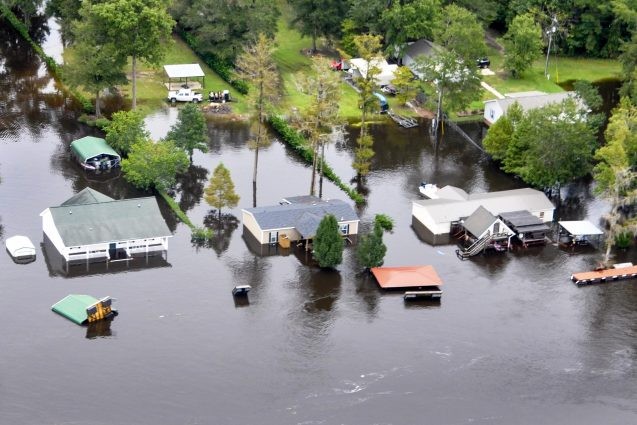Columbia Researchers Team With Global Firm to Enhance Hurricane Risk Scenarios
The enhanced models will enable insurers to analyze the financial implications of catastrophic events and to understand which areas are most at risk.

In a new collaboration, Columbia University researchers will work with the firm Aon to integrate climate change information into the company’s hurricane risk models. The models enable insurers to analyze the financial implications of catastrophic events and to understand which areas are most at risk.
In the past decade alone, more than 370 tropical cyclones resulted in USD $236 billion in insured losses around the globe. As the financial and humanitarian impacts from the peril grows, insurers need to understand how climate change, coupled with growing populations and exposures, will further impact their portfolios. Understanding these risks will help insurers to continue providing coverage in times of need, to help customers better manage physical risks, and to address underserved populations with more affordable and scalable products.
To help fill this need, Lamont-Doherty Earth Observatory scientist Adam Sobel, co-director of Columbia’s Initiative on Extreme Weather and Climate — together with Lamont’s Chia-Ying Lee and Suzana Camargo and Michael Tippett of Columbia’s School of Engineering and Applied Sciences — will combine peer-reviewed climate change data into Aon’s Impact Forecasting tropical cyclone catastrophe model suite.
Aon representatives say these enhancements will enable insurers to quantify climate risk in their portfolios and make adjustments that will inform better decisions on pricing, investments and exposure management both today and over the long term.
“We started building our tropical cyclone model several years ago with the hope not just that we could advance the science, but that our results would be taken up by real decision-makers and have a concrete positive impact. This project is a big step forward in realizing that goal,” said Sobel. “Aon is a global leader in managing disaster risk, and we’re so excited to work with our colleagues there to understand the climate change signal in tropical cyclone activity and inform better decision-making.”
Steve Bowen, director and meteorologist for Aon’s Impact Forecasting team, explained, “Columbia’s expertise in climate modeling and forecasting is a natural complement to the work we do at Aon. Tropical cyclones remain the costliest and most visible peril and showing different climate change scenarios through the lens of an Impact Forecasting model will help our clients see how future cyclone behavior and frequency may differ from today’s current atmospheric and oceanic environment.”
George deMenocal, U.S. chairman of Aon’s Reinsurance Solutions business, added, “Climate risk is an urgent systemic issue and insurers need to understand how it will impact their portfolios through data and analytics. The insights from Columbia are critical as Aon continues to work with reinsurers to develop a bespoke view of catastrophe risk. This means understanding underlying assumptions, acknowledging uncertainty in estimates and incorporating bespoke adjustments into models when appropriate.”
